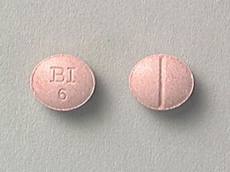Cardiovascular and Respiratory Medications
Introduction
 The cardiovascular system, also known as the circulatory system, includes the heart, blood vessels and blood. The respiratory system includes the nose, mouth, sinuses, throat, bronchial tubes and lungs.
The cardiovascular system, also known as the circulatory system, includes the heart, blood vessels and blood. The respiratory system includes the nose, mouth, sinuses, throat, bronchial tubes and lungs.
The two systems are responsible for ensuring the body receives an adequate supply of oxygen and that carbon-dioxide is expelled from the body.
There are a number of medications which are designed to improve or repair cardiovascular and respiratory functions and some of these have been suggested as treatments for autistic people.
They include antihistamines, such as cyproheptadine; antihypertensives such as clonidine; calcium channel blockers such as nimodipine; and diuretics such as bumetanide
Evidence
Determining the benefits of most cardiovascular and respiratory medications for autistic people is not currently possible. We must wait for further research of sufficiently high quality to be completed.
Risks and safety
Many cardiovascular and respiratory medications contain active ingredients that can have strong effects on the mind and the body. For example, according to the British National Formulary: ‘Beta-blockers slow the heart and can depress the myocardium; they are contraindicated in patients with second- or third-degree heart block. Beta-blockers should also be avoided in patients with worsening unstable heart failure; care is required when initiating a beta-blocker in those with stable heart failure. Sotalol may prolong the QT interval, and it occasionally causes life-threatening ventricular arrhythmias.’
Antihypertensives
Antihypertensives are drugs used to treat a range of conditions, including high blood pressure, abnormal heart rhythms and heart disease. Some antihypertensive drugs are also used to treat other, related conditions For example, some antihypertensive drugs are also diuretics, a group of medications used to reduce the swelling and fluid retention caused by various medical problems, including heart or liver disease.
Antihypertensives work by decreasing the heart rate and relaxing the blood vessels so that blood can flow more easily through the body.
There are several types of antihypertensives which have been suggested as treaments for autistic people includuing: diuretics, adrenergic agonists and adrenergic antagonists.
- There are several types of diuretics including thiazide diuretics such as cyclopenthiazide (Navidrex); loop diuretics such as bumetanide (Bumex); and potassium-sparing diuretics such as eplerone (Inspra).
- There are two main types of adrenergic agonists: alpha 1-adrenergic receptor agonists such as methoxamine (Vasoxyl) and alpha 2-adrenergic receptor agonists such as clonidine (Catapres) and guanfacine (Tenex).
- There are two main types of adrenergic antagonists: alpha-adrenergic-antagonists (alpha blockers) such as doxazosin (Cardura) and alpha-adrenergic-antagonists (beta blockers) such as propranolol (Inderal LA)
Some researchers believe that diuretics such as bumetanide may be effective in reducing core features of autism, such as difficulties with social communication and restricted interests.
Some alpha 2-adrenergic receptor agonists have been shown to be effective in reducing impulsivity, inattention, and hyperactivity associated with attention deficit hyperactivity disorder. Because of this some people think they could also be used to treat these behaviours in autistic people.
Some people think alpha-adrenergic-antagonists can be used treat people with learning disabilities, including some autistic people, who have challenging behaviour. Some people also think that specific beta-blockers, such as propranolol, can be used to increase and improve communication skills, such as word fluency
More information
Please see publications on Antihypertensives / Diuretics
Related Pages
- Updated
- 27 May 2022

